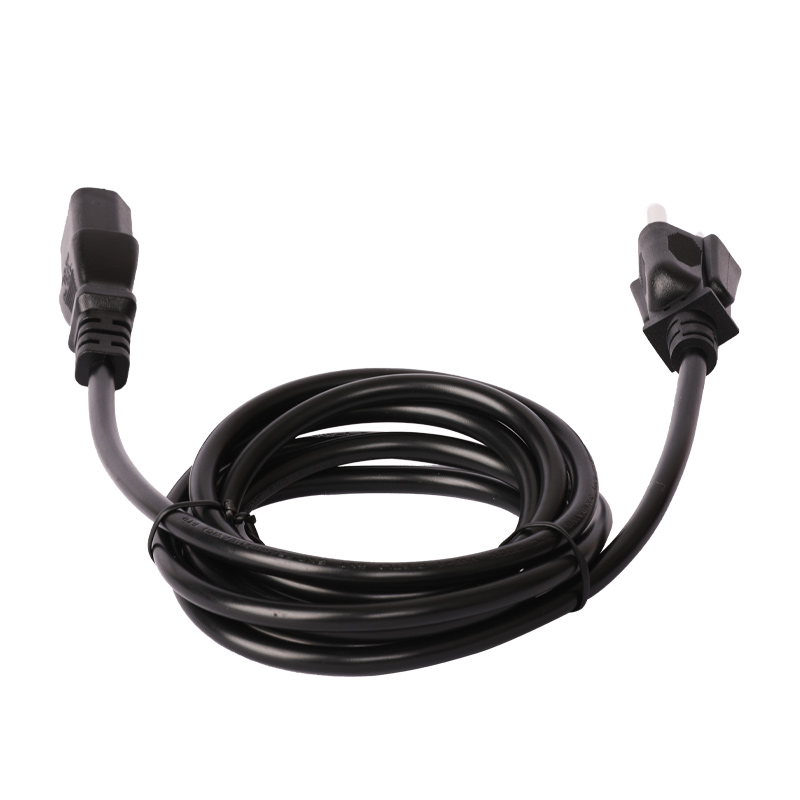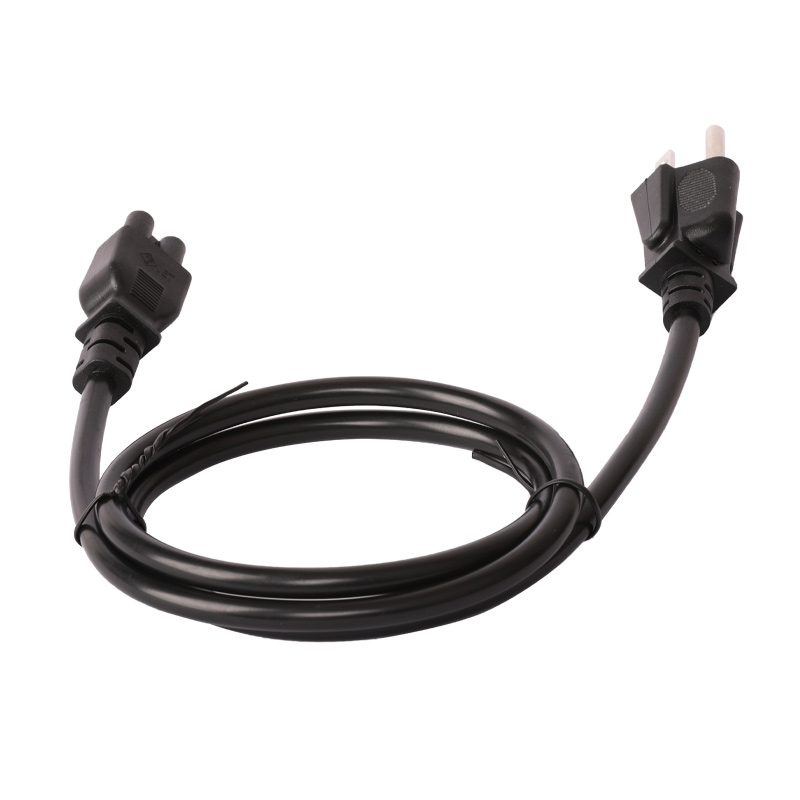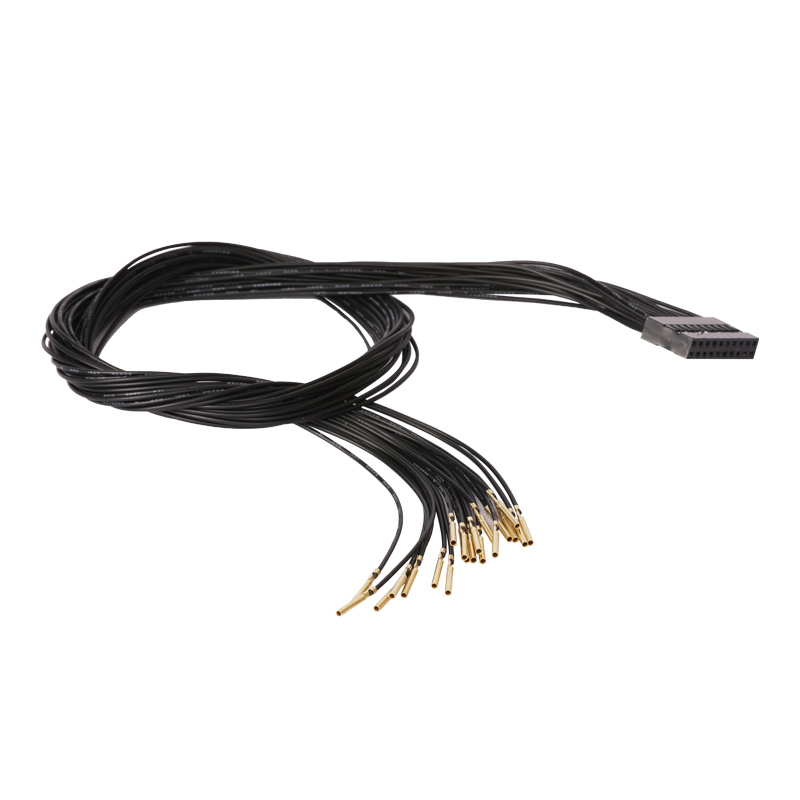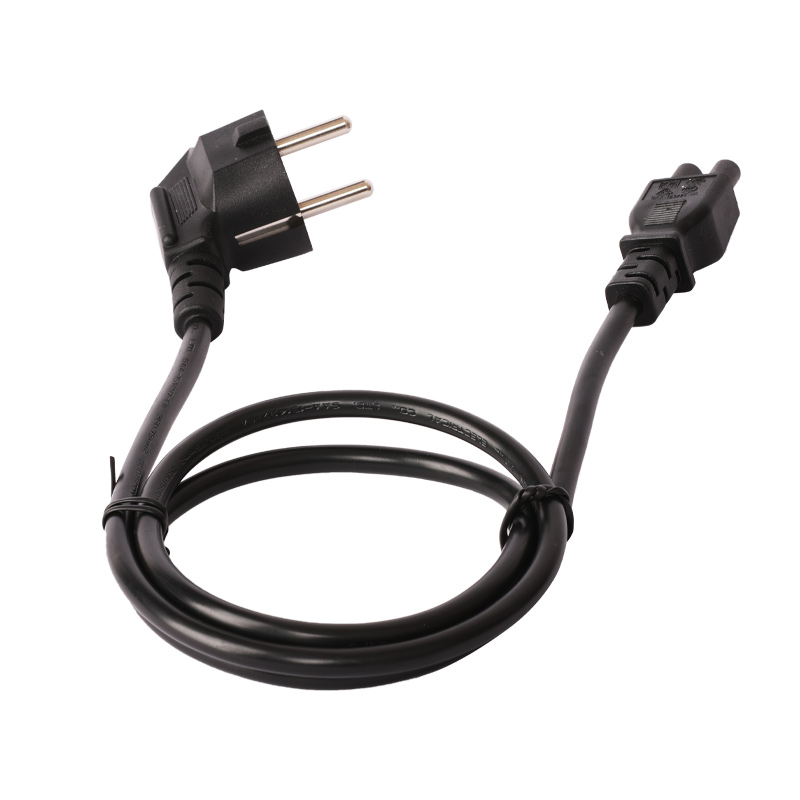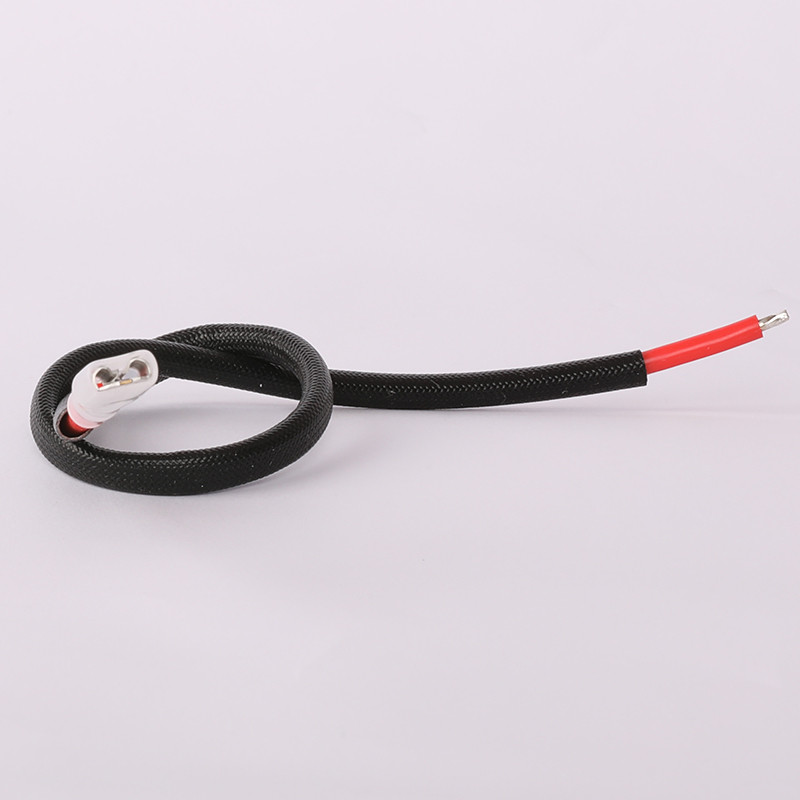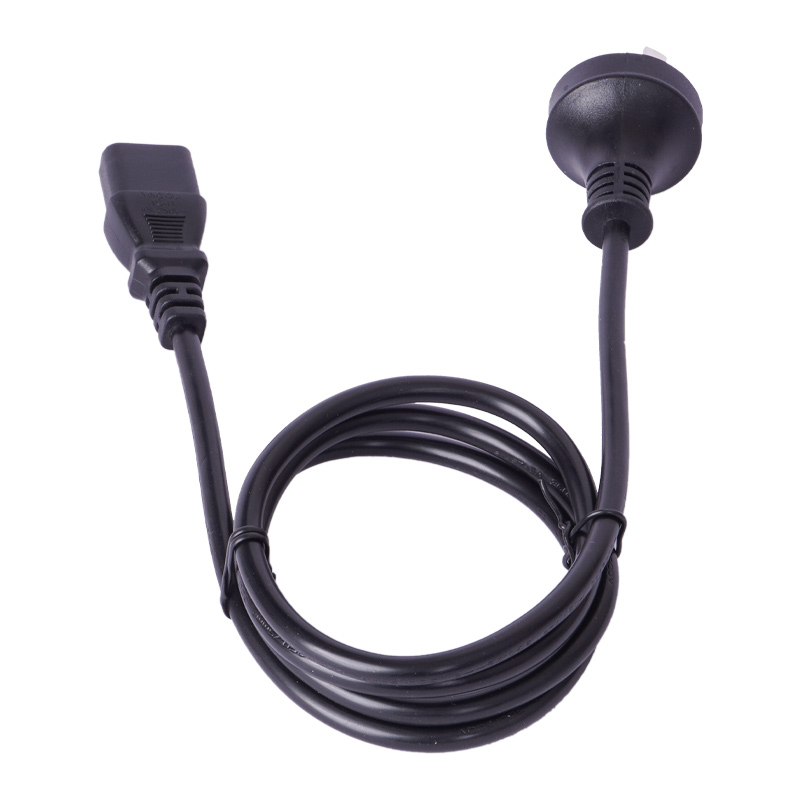Big Discount 100 Ft Power Cord - High quality certificated C19 to C20 power cord manufacturer – Komikaya
Big Discount 100 Ft Power Cord - High quality certificated C19 to C20 power cord manufacturer – Komikaya Detail:
Composition structure of power line
The structure of the power cord is not very complex, but don’t simply see through it from the surface. If you study the power cord well, some places still need to be professional to understand the structure of the power cord.
The structure of power line mainly includes outer sheath, inner sheath and conductor. Common transmission conductors include copper and aluminum wire.
Outer sheath
The outer sheath, also known as protective sheath, is the outermost layer of sheath of the power line. This layer of outer sheath plays the role of protecting the power line. The outer sheath has strong characteristics, such as high temperature resistance, low temperature resistance, resistance to natural light interference, good winding performance, high service life, material environmental protection and so on.
Inner sheath
The inner sheath, also known as the insulating sheath, is an indispensable intermediate structural part of the power line. As the name suggests, the main use of the insulating sheath is insulation to ensure the power on safety of the power line, so that there will be no leakage between the copper wire and the air, and the material of the insulating sheath should be soft to ensure that it can be well embedded in the intermediate layer.
Copper wire
Copper wire is the core part of power line. Copper wire is mainly the carrier of current and voltage. The density of copper wire directly affects the quality of power line. The material of power cord is also an important factor for quality control, and the quantity and flexibility of copper wire are also considered.
Inner sheath
The inner sheath is a layer of material that wraps the cable between the shielding layer and the wire core. It is generally polyvinyl chloride plastic or polyethylene plastic. There are also low smoke halogen-free materials. Use according to the process regulations, so that the insulating layer will not contact with water, air or other objects, so as to avoid moisture and mechanical damage to the insulating layer.
Function performance of power line
Although the power cord is only an accessory for household appliances, it plays a vital role in the use of household appliances. If the power cord breaks down, the whole appliance will not work. Bvv2 should be used as household power cord × 2.5 and bvv2 × 1.5 type of wire. BVV is the national standard code, which is copper sheathed wire, 2 × 2.5 and 2 × 1.5 represents 2-core 2.5 mm2 and 2-core 1.5 mm2 respectively. In general, 2 × 2.5 main line and trunk line × 1.5 make single electrical branch line and switch line. Bvv2 for single-phase air conditioning special line × 4. Special ground wire shall be provided additionally.
Manufacturing process of power cord
Power lines are produced every day. Power lines need more than 100000 meters a day and 50000 plugs. With such huge data, the production process must be very stable and mature. After continuous exploration and research and the approval of European VDE certification body, national standard CCC certification body, American UL certification body, British BS certification body and Australian SAA certification body, the power cord plug has been mature. Here is a brief introduction:
1. Power line copper and aluminum single wire drawing
The copper and aluminum rods commonly used for power lines shall pass through one or more die holes of the drawing die with a wire drawing machine at room temperature, so as to reduce the section, increase the length and improve the strength. Wire drawing is the first process of wire and cable companies, and the primary process parameter of wire drawing is mold matching technology.
2. Single wire annealing of power line
When copper and aluminum monofilaments are heated to a certain temperature, recrystallization is used to improve the toughness of monofilaments and reduce the strength of monofilaments, so as to meet the requirements of wires and cables for conductor cores. The key of annealing process is to eliminate the oxidation of copper wire
3. Stranding of power line conductor
In order to improve the flexibility of the power line and facilitate the laying of the device, the conductive wire core is twisted by multiple single wires. From the stranding mode of conductor core, it can be divided into regular stranding and irregular stranding. Irregular stranding is divided into bundle stranding, concentric compound stranding, special stranding, etc. In order to reduce the occupied area of the conductor and reduce the geometric size of the power line, the pressing method is also adopted in the of the stranded conductor, so that the popular circle can be changed into a semicircle, fan-shaped, tile shaped and tightly pressed circle. This kind of conductor is mainly used on the power line.
4. Power line insulation extrusion
The plastic power cord mainly adopts extruded solid insulation layer. The main technical requirements of plastic insulation extrusion are as follows:
1) Bias: the bias value of the extruded insulation thickness is the main mark to show the degree of extrusion. Most of the product structure size and its bias value have clear rules in the specification.
2) Lubricity: the surface of the extruded insulating layer shall be lubricated and shall not show poor quality problems such as coarseness, charring and impurities
3) Densification: the cross section of the extruded insulating layer shall be dense and robust, no needle holes visible to the naked eye and no bubbles.
5. Power line wiring
For the multi-core power cord, in order to ensure the molding degree and reduce the shape of the power cord, it is generally required to twist it into a circle. The mechanism of stranding is similar to that of conductor stranding, because the stranding pitch diameter is large, and most of them adopt the method of no untwisting. Technical requirements for cable forming: first, eliminate the twisting of the cable caused by the turning over of the special-shaped insulating core; The second is to avoid scratching the insulating layer.
Most cables are completed with the completion of two other processes: one is filling, which ensures the roundness and invariability of cables after cable completion; One is binding to ensure that the cable core is not loose.
6. Inner sheath of power line
In order to protect the insulated wire core from being damaged by armor, it is necessary to properly maintain the insulating layer. The inner protective layer is divided into extruded inner protective layer (isolation sleeve) and wrapped inner protective layer (cushion). Wrapping cushion instead of binding belt shall be carried out simultaneously with cable forming process.
7. Power cord armor
Laid in the underground power line, the task can accept the inevitable positive pressure effect, and the inner steel strip armor structure can be selected. When the power line is laid in places with both positive pressure effect and tensile effect (such as water, vertical shaft or soil with large drop), the structural type with inner steel wire armor shall be selected.
8. Outer sheath of power line
The outer sheath is the structural part of the insulating layer of the maintenance power line to avoid the corrosion of environmental factors. The primary effect of the outer sheath is to improve the mechanical strength of the power line, prevent chemical erosion, moisture, water immersion, prevent the combustion of the power line and so on. According to the different requirements of the power line, the plastic sheath shall be directly extruded by the extruder.
Common types of power cord
General rubber plastic power cord
1. Scope of application: connection and internal installation lines of power, lighting, electrical devices, instruments and telecommunications equipment with AC rated voltage of 450 / 750V and below.
2. Laying occasion and method: indoor open laying, trench channel, tunnel laying along the wall or overhead; Outdoor overhead laying, laying through iron pipe or plastic pipe, laying of electrical equipment, instruments and radio devices are fixed laying; The plastic sheathed power cord can be directly buried in the soil.
3. General requirements: economical and durable, simple structure.
4. Special requirements:
1) When laying outdoors, due to the influence of sunlight, rain, freezing and other conditions, it is required to be resistant to atmosphere, especially sunlight aging; Cold resistance requirements in severe cold areas;
2) When in use, it is easy to be damaged or flammable by external force, and it should be put through the pipe in case of many contacts with oil; When threading the pipe, the power line is subject to large tension and may be scratched, so lubrication measures should be taken;
3) For internal use of electrical equipment, when the installation position is small, it shall have certain flexibility, and the color separation of insulated wire core is required to be clear. It shall be matched with corresponding connector terminals and plugs to make the connection convenient and reliable; For occasions with anti electromagnetic requirements, shielded power lines shall be used;
4) For occasions with high ambient temperature, sheathed rubber power cord shall be used; Apply heat-resistant rubber power cord for special high temperature occasions.
5. Structural composition
1. Conducting power core: when used for internal installation of power, lighting and electrical equipment, copper core shall be preferred, and compact core shall be used for conductors with large section; Conductors for fixed installation generally adopt class 1 or class 2 conductor structure.
2. Insulation: natural styrene butadiene rubber, polyvinyl chloride, polyethylene and nitrile polyvinyl chloride composites are generally used as insulation materials; The heat-resistant power line adopts PVC with temperature resistance of 90 ℃.
3. Sheath: there are five kinds of sheath materials: PVC, cold resistant PVC, anti ant PVC, black polyethylene and neoprene rubber.
Black polyethylene and neoprene sheathed power lines should be selected for special cold resistance and outdoor overhead laying.
In the environment of external force, corrosion and humidity, the power cord with rubber or plastic sheath can be used.
Rubber plastic flexible power cord
1. Scope of application: mainly applicable to the connection of medium and light mobile appliances (household appliances, electric tools, etc.), instruments and meters and power lighting; The working voltage is AC 750V and below, and most of them are AC 300C.
2. Because the product needs to move, bend and twist frequently during use, the power cord is required to be soft, stable in structure, not easy to kink, and has certain wear resistance; The plastic sheathed rubber power cord can be directly buried in the soil.
3. The grounding wire adopts yellow and green two-color wire, and other wire cores in the rubber power line are not allowed to adopt yellow and green wire cores.
4. When used for the power connection wire of electric heating appliances, braided rubber insulated flexible wire or rubber insulated flexible wire shall be used as appropriate.
5. Simple and light structure is required.
6. Structure
1) Power conductor core: copper core, soft structure, twisted by multiple single wire bundles; Flexible wire conductors generally adopt class 5 or class 6 conductor structure.
2) Insulation: natural styrene butadiene rubber, polyvinyl chloride or soft polyethylene plastic are generally used as insulation materials.
3) The cable pitch multiple is small.
4) The outer protective layer is woven with cotton yarn to avoid overheating and scalding the insulating layer.
5) In order to facilitate use and simplify the production process, the three core balance structure is adopted, which can save production hours and improve production efficiency.
Shielded insulated power line
1. Performance requirements of shielded power lines: basically the same as the requirements of similar power lines without shielding.
2. Because it meets the requirements of equipment for shielding (anti-interference performance), it is generally recommended to be used in medium-level electromagnetic interference occasions; The plastic sheathed rubber power cord can be directly buried in the soil.
3. The shielding layer shall be in good contact with the connecting device or grounded at one end, and it is required that the shielding layer shall not be loosened, broken or easily scratched by foreign objects.
4. Structure
1) Conducting power core: tin plating is allowed in some occasions;
2) The surface coverage density of the shielding layer shall meet the standard or meet the user’s requirements; The shielding layer shall be braided or wound with tinned copper wire; If an extruded sheath should be added outside the shield, the shield is allowed to be woven or wound with soft round copper wire.
3) In order to prevent internal interference between cores or pairs, separate shielding structures for each phase of each core (or pair) can be produced.
General rubber sheathed rubber power cord
1. The general rubber sheathed rubber power cord has a wide range of applications. It can be applied to general occasions of various electrical equipment requiring mobile connection, including the connection of electrical mobile equipment used in various departments of industry and agriculture.
2. According to the cross-section size of the rubber power cord and the ability to follow the external force of the machine, it can be divided into light, medium and heavy. These three types of products have the requirements of softness and easy bending, but the requirements for the softness of light rubber power cord are high, and they should be light, small in size and can not bear strong external mechanical force; Medium sized rubber power cord has certain flexibility and can withstand considerable external mechanical force; Heavy rubber power cord has high mechanical strength.
3. The rubber power cord sheath shall be tight, solid and round. Yqw, YZW and YCW rubber power lines are suitable for field use (such as searchlight, agricultural electric plow, etc.) and should have good solar aging resistance.
4. Structure
1) Conductive power cord core: Copper flexible cord bundle is adopted, and the structure is soft. Paper wrapping is allowed on the surface of large section to improve bending performance.
2) Natural styrene butadiene rubber is used for insulation, with good aging performance.
3) The rubber of outdoor products adopts neoprene or mixed rubber formula based on neoprene.
Mining rubber power cord
1. It has a wide range of applications and is mainly used for rubber power cord products for surface and underground equipment in mining industry, including rubber power cord for mining electric drill, rubber power cord for communication and lighting equipment, rubber power cord for mining and transportation, rubber power cord for cap lamp, and rubber power cord for power supply of underground mobile substation.
2. The use environment of mining rubber power line is very complex, the working environment is very harsh, gas and coal dust gather, which is easy to cause explosion, so the safety requirements of rubber power line are very high.
3. The product needs to move, bend and twist frequently when in use, so it is required that the power cord is soft, stable in structure, not easy to kink, etc., and has certain wear resistance.
4. Structure
1) Power conductor core: copper core, flexible structure, twisted by multiple single wire bundles: flexible conductor generally adopts class 5 or class 6 conductor structure.
2) Insulation: rubber is generally used as insulation material.
3) The cable pitch multiple is small.
4) Many products adopt metal braiding, uniform electric field and improve the sensitivity display of insulation condition.
5) There is a thick outer sheath, and the color separation treatment is carried out under the mine, so that the construction personnel can understand the different voltage levels used by the rubber power line.
Seismic rubber power cord
1. Land use: small outer diameter, light weight, softness, wear resistance, bending resistance, weather resistance, water resistance, anti-interference, good insulation performance, easy identification of core wire and convenient complete set organization.
The conductor shall be insulated with soft structure or thin enamelled wire, the wire core shall be twisted in pairs and separated in color, the material with low dielectric coefficient shall be used for insulation, and the polyurethane material shall be used for sheath.
2. Aviation: non-magnetic, tensile resistance, small outer diameter and light weight.
Copper conductor
3. For offshore use: good sound permeability, good water resistance, moderate floating, can float at a certain depth under the water, and has good resistance to tension, bending and interference.
Special sound transmission material, reinforced wire core or armored foam inner sheath to adjust the floatability.
Drilling rubber power cord
1. Load bearing detection rubber power line: the outer diameter is small, usually less than 12mm; The length is long, and the single length above 3500m is supplied; Oil and gas resistance, water pressure resistance of 120MPa (1200 times of atmospheric pressure); High temperature resistance: above 100 ℃; Anti interference and anti tension: above 44kn; Wear resistance and hydrogen sulfide gas resistance; When all armored steel strands are broken, they shall not be scattered, otherwise they will cause waste wells.
1) The conductor is of soft structure and tinned; 2) High temperature resistant polypropylene, ethylene propylene rubber or fluoroplastics for insulation; 3) Semi conducting material for shielding; 4) High strength galvanized steel wire for armor; 5) Use special manufacturing technology.
2. Perforating rubber power line: large hole cross-sectional area and tension, wear-resistant, vibrating and not loose.
1) Medium soft structure for conductor; 2) Polypropylene, ethylene propylene rubber or other high temperature resistant materials for insulation; 3) The size of conductor, insulation and armor is correct.
3. Rubber power lines for coal field, nonmetal, metal, geothermal, hydrological and underwater survey.
1) Reinforced core and inner armor; 2) The conductor is soft copper wire; 3) Ordinary rubber for insulation; 4) Sheath neoprene rubber; 5) Metal or non-metal armor for special cases; 6) Coaxial rubber power cord shall be used for underwater rubber power cord; 7) The comprehensive detector shall have the functions of power, communication and so on.
4. Rubber power line of submersible pump: the outer diameter of oil pipe is small, and the outer size of rubber power line is required to be small; With the increase of well depth and high power, the insulation is required to be resistant to high temperature, high voltage and stable structure; Good electrical performance, good insulation performance and low leakage current; Long service life, stable structure and reusability; Good mechanical properties.
1) For small and medium-sized oil pipes, flat rubber power lines shall be used to ensure small overall dimensions; Solid conductor with large cross section: stranded conductor and round rubber power cord; 2. ) polyimide fluorine 46 sintered wire with ethylene propylene insulation for leading rubber power cord core; Ethylene propylene and cross-linked polyethylene heat-resistant insulation for power rubber power line; 3) Oil resistant neoprene, chlorosulfonated polyethylene and other oil and high temperature resistant materials, lead sheath, etc. for sheath; 4) Use interlocking armor; 5) Halogen proof structure, with halogen-proof sheath added to the bare armor.
Elevator rubber power cord
1. The rubber power cord shall be hung freely and fully untwisted before use. The reinforcing core of the rubber power cord shall be fixed and bear the tension at the same time;
2. Multiple rubber power lines shall be laid in rows. During operation, the rubber power line moves up and down with the elevator, moving and bending frequently, requiring softness and good bending performance;
3. Rubber power lines are laid vertically, requiring certain tensile strength;
4. If there is oil stain in the working environment, it is required to prevent fire, and the rubber power cord is required not to delay combustion;
5. Small outer diameter and light weight are required.
6. Structure
1) The 0.2mm round copper single wire bundle is adopted, and the insulation and conductor are wrapped with an isolation layer. When the cable is formed, it is twisted in the same direction to increase the flexibility and bending performance of the rubber power line;
2) Rubber power cord reinforcing core is added in the rubber power cord to bear mechanical tension. The reinforcing core is made of nylon rope, steel wire rope and other materials to increase the tensile strength of rubber power cord;
3) YTF rubber power cord adopts a sheath mainly made of neoprene to improve the weather resistance and non flame retardancy of rubber power cord.
Rubber power cord for control signal
1. Since the rubber power cord of control signal is used to control the measurement system, it is required that the rubber power cord work safely and reliably;
2. It is generally fixed laying, but the rubber power line is connected with the equipment
It is required to be soft and can withstand multiple bending without fracture;
3. The working voltage is 380V and below, and the voltage of signal rubber power line is lower;
4. The working current of signal rubber power line is generally below 4a. When the control rubber power line is used as the main equipment circuit, the current is slightly larger, so the section can be selected according to the line voltage drop and mechanical properties.
5. Structure
1) The conductor adopts copper core, and the fixed laying adopts single structure, and 7 twisted structures are added outside; The mobile adopts category 5 flexible conductor structure to meet the flexibility and bending resistance; 2) The insulation mainly adopts polyethylene, polyvinyl chloride, natural styrene butadiene rubber and other insulation; 3) The insulated wire core shall be formed into cable in reverse to make the structure more stable; For the field rubber power cord, nylon rope is used to fill the cable to increase the tensile capacity, while the cable in the same direction can increase the flexibility; 4) Sheath: PVC, neoprene and nitrile PVC composites are mainly used.
DC high voltage rubber power line
1. Zhihan high-voltage rubber power line has a wide range of applications and is mainly used in new technical equipment in various industries, such as X-ray machine, electron beam processing, electron bombardment furnace, electron gun, electrostatic painting, etc. generally, the power of this kind of products is large, so the filament current through the rubber power line is also large, up to tens of AMPS; The voltage ranges from 10kV to 200kV;
2. Rubber power lines are mostly fixed and generally not in direct contact with people;
3. The rubber power line has large transmission energy, so the thermal property of the rubber power line and the allowable working temperature of the rubber power line shall be considered;
4. Some devices use medium frequency short-time discharge and rubber power cord
It must withstand 2.5-4 times of voltage, so sufficient electrical strength should be considered;
5. Since all kinds of equipment have not been standardized and serialized, the working voltage between filaments and between filament core and grid core of the same type of equipment are different, so they should be selected separately.
6. Structure
1) Conducting power cord core: the cord core is generally 3 cores, and there are also 4 cores or 5 cores; 2) 3-core rubber power cord generally has two filament heating cores and one control core; The conductor and shield bear DC high voltage; 3) There are two forms of 3-core rubber power line: one is similar to x rubber power line, which adopts split phase insulation and then comprehensively wraps semi-conductive layer and high-voltage layer; The other is to take the control core as the central conductor, squeeze and wrap the insulation, twist the two filaments concentrically, and then squeeze and wrap the semi-conductive layer and high-voltage insulation layer; High voltage insulation layer: the maximum DC field strength of natural styrene butadiene rubber is 27KV / mm, and that of ethylene propylene insulation is 35kV / mm; 4) Outer shielding layer: 0.15-0.20mm tinned copper wire is used for weaving, and the weaving density is not less than 65%; Or wrapped with metal belt; 5) The sheath is extruded with extra soft PVC or nitrile PVC.
Twisted pair power cord
For twisted pair, users are most concerned about several indicators to characterize its performance. These indexes include attenuation, near end crosstalk, impedance characteristics, distributed capacitance, DC resistance, etc.
(1) Decay
Attenuation is a measure of signal loss along the link. The attenuation is related to the length of the cable. With the increase of the length, the signal attenuation also increases. Attenuation is expressed in “DB” as the ratio of the signal strength from the source transmitting end to the receiving end. Since the attenuation varies with frequency, the attenuation shall be measured at all frequencies within the application range.
(2) Near end crosstalk
Crosstalk is divided into near end crosstalk and far end crosstalk (FEXT). The tester mainly measures next. Due to line loss, the influence of FEXT value is small. Near end crosstalk (next) loss measures the signal coupling from one pair of lines to another in a UTP link. For UTP links, next is a key performance index, which is also the most difficult to measure accurately. With the increase of signal frequency, the measurement difficulty will increase. Next does not represent the crosstalk value generated at the near end point, it only represents the crosstalk value measured at the near end point. This value will vary with the length of the cable. The longer the cable, the smaller the value becomes. At the same time, the signal at the transmitting end will also be attenuated, and the crosstalk to other line pairs will be relatively small. Experiments show that only the next measured within 40 meters is more real. If the other end is an information socket more than 40m away, it will produce a certain degree of crosstalk, but the tester may not be able to measure this crosstalk value. Therefore, it is best to take the next measurement at both endpoints. The tester is equipped with corresponding equipment, so that the next value at both ends can be measured at one end of the link.
(3) DC resistance
Tsb67 does not have this parameter. The DC loop resistance consumes part of the signal and converts it into heat. It refers to the sum of the resistance of a pair of wires. The DC resistance of 11801 twisted pair shall not be greater than 19.2 ohms. The difference between each pair should not be too large (less than 0.1 Ohm), otherwise it indicates poor contact, and the connection point must be checked.
(4) Characteristic impedance
Different from the loop DC resistance, the characteristic impedance includes resistance, inductive impedance and capacitive impedance with frequency of 1 ~ 100MHz. It is related to the distance between a pair of wires and the electrical performance of insulators. Various cables have different characteristic impedances, while twisted pair cables have 100 ohms, 120 ohms and 150 ohms.
(5) Attenuated crosstalk ratio (ACR)
In some frequency ranges, the proportional relationship between crosstalk and attenuation is another important parameter to reflect the cable performance. ACR is sometimes expressed by signal-to-noise ratio (SNR), which is calculated by the difference between the worst attenuation and the next value. Larger ACR value indicates stronger anti-interference ability. The general system requires at least 10 dB.
(6) Cable characteristics
The quality of communication channel is described by its cable characteristics. SNR is a measure of the strength of data signal when considering the interference signal. If the SNR is too low, the receiver will not be able to distinguish the data signal and noise signal when the data signal is received, resulting in data error. Therefore, in order to limit the data error to a certain range, a minimum acceptable SNR must be defined.
Identification method of power line
1、 Look at the quality certificate of household appliances
If the quality of household appliances is qualified, the quality of power cord of household appliances should also be tested, and there will be no big problem.
2、 Check the section of the wire
The cross section of the wire and the surface of the copper core or aluminum core of the qualified product should have metallic luster. The black copper or white aluminum on the surface indicates that it has been oxidized and is a unqualified product.
3、 Look at the appearance of the power cord
The insulation (sheath) layer of qualified products is soft, tough and flexible, and the surface layer is compact, smooth, without roughness, and has pure gloss The surface of the insulating (sheath) layer shall have clear and scratch resistant marks. For products produced with informal insulating materials, the insulating layer feels transparent, brittle and non ductile.
4、 Look at the core of the power cord
The wire core produced from pure copper raw materials and subjected to strict wire drawing, annealing and stranding shall have a bright, smooth surface, no burr, flat stranding tightness, soft, ductile and not easy to fracture.
5、 Look at the length of the power cord
The length of power cord required by different electrical appliances is different. Decoration owners had better know the length of qualified power cord before purchasing, so that they can know well when purchasing electrical appliances.
In order to ensure the normal use and living safety of home appliances, decoration owners must pay attention to the selection of power cord and carefully check its quality when purchasing home appliances. If the quality of power cord is unqualified, it is best not to buy this home appliance, so as not to bring trouble to themselves.
Type of power cord plug
There are four types of plugs commonly used
1、 European plug
① European plug: also known as French standard plug, also known as pipe plug
The plug has the supplier and the specification and model of the supplier, such as ke-006 yx-002, and the certification of various countries: (d (Denmark); N (Norway); S (Sweden); VDE (Germany); Fi (Finland); IMQ (Italy); Kema (Netherlands); CEBEC (Belgium).
Suffix: n / 1225
② Power line identification code: h05vv □ □ f 3G 0.75mm2:
H: Mm2 identification
05: indicates the withstand voltage strength of the power line (03 ∶ 300V 05 ∶ 500V)
VV: the core insulation layer on the front V surface, and the rear V represents the sheath insulation layer of the power line. For example, VV is represented by RR as the rubber insulation layer, for example, VV is represented by n as neoprene;
□□: the front “□” has a special code, and the rear “□” indicates a flat line. For example, adding H2 indicates a flat two-core line;
F: Indicates that the line is a soft line
3: Indicates the number of internal cores
G: Indicates grounding
0.75ma: indicates the cross-sectional area of the power line
③ PVC: material refers to the material of the reinforced insulation layer. The high temperature resistance is below 80 ℃, and the soft PVC has 78 ° 55 ° hardness. The larger the number, the harder the temperature resistance is, the higher the temperature resistance is. The rubber wire has high temperature resistance and can withstand below 200 ℃. The same soft hardness (PVC) soft wire is used.
2、 English insertion
① British plug: 240V 50Hz, withstand voltage 3750V 3S 0.5mA, fuse (3a 5A 10A 13a) → fuse, size requirements: total length 25-26.2mm, middle diameter 4.7-6.3mm, metal cap diameter at both ends 6.25-6.5mm (silk screen BS1362);
② The internal wire of the plug (open the BS plug and face yourself. The right side is the L wire (fire) fuse. The length of the ground wire must be greater than 3 times the length of the (fire wire and zero wire). Loosen the fixing screw and pull it out with external force. The wire ground must finally fall off (the fixing screw for fixing the three wires must be conical).
③ The identification of power cord is the same as that of European plug-in.
3、 American plug
① American plug: 120V 50 / 60Hz is divided into two core wire, three core wire, polarity and non polarity. The copper strip of power plug to the United States must have plug terminal sheath;
The line printed by two core wire indicates live wire; The connecting wire with large polarity plug pin is zero wire, and the connecting wire with small pin is live wire (the concave and convex surface of power line is zero, and the round surface of line is live wire);
② There are two modes of wire: nispt-2 double-layer insulation, XTV and SPT single-layer insulation
Nispt-2: nispt refers to double-layer insulation, – 2 surface two core insulation and outer insulation;
XTV and SPT: single layer insulation layer, -2 surface two core wire (wire body with groove, outer insulation directly wrapped with copper core conductor);
Spt-3: single-layer insulation with ground wire, – 3 refers to three core wire (wire body with groove, ground wire in the middle is double-layer insulation);
SPT and nispt are off-line, and SVT is round wire with double-layer insulation. Core insulation and outer insulation
③ American plugs generally use the certification number, and there is no UL pattern directly on the plug. For example, e233157 and e236618 are printed on the outer cover of the wire.
④ American plug cable is different from European plug cable:
European interpolation is represented by “H”;
How many lines are used in American regulations? For example: 2 × 1.31mm2(16AWG) 、2 × 0.824mm2 (18awg): VW-1 (or HPN) 60 ℃ (or 105 ℃) 300vmm2;
1.31 or 0.824 mm2: cross sectional area of wire core;
16awg: refers to the cross-sectional area of wire core die, which is the same as mm2;
VW-1 or HPN: VW-1 is PVC, mm2 is neoprene;
60 ℃ or 150 ℃ is the temperature resistance of the power line;
300V: the withstand voltage strength of the power line is different from that of the European Code (the European code is represented by 03 or 05).
4、 Japanese plug: PSE, jet
VFF 2*0.75mm2 -F-
① VFF: V indicates that the wire material is PVC; FF is a single-layer insulating layer with groove wire body;
② Vctfk: VC surface wire material: PVC; Tfk is a double-layer insulation layer bias wire, outer insulation layer and copper core wire;
③ VCTF: VC indicates that the wire material is PVC; TF is double-layer insulated round wire;
④ There are two kinds of power lines: one is 3 × 0.75mm2, 2 for the other × 0.75mm2。
three × 0.75mm2:3 refers to three core wire; 0.75mm2 refers to the cross-sectional area of wire core;
⑤ F: soft line material;
⑥ Japanese plug three core wire plug only mm2 wire is directly locked on the socket (good safety performance and convenience).
5、 The rated current of the appliance corresponds to the cross-sectional area of the soft wire used:
① For appliances greater than 0.2 and less than or equal to 3a, the cross-sectional area of flexible wire shall be 0.5 and 0.75mm2
② For appliances larger than 3a and less than or equal to 6a, the cross-sectional area of flexible cord shall be 0.75 and 1.0mm2
③ The cross-sectional area of flexible cord applied to appliances with a diameter of more than 6a and less than or equal to 10A: 1.0 and 1.5mm2
④ Cross sectional area of flexible cord greater than 10a and less than or equal to mm2: 1.5 and 2.5mm2
⑤ For appliances larger than 16a and less than or equal to 25A, the cross-sectional area of flexible cord shall be 2.5 and 4.0mm2
⑥ For appliances larger than 25a and less than 32a, the cross-sectional area of flexible cord shall be 4.0 and 6.0mm2
⑦ Mm2 sectional area greater than 32a and less than or equal to 40A: 6.0 and 10.0mm2
⑧ For appliances larger than 40A and less than or equal to 63A, the cross-sectional area of flexible cord shall be 10.0 and 16.0mm2
6、 What size of power cord is used for appliances with a mass of more than kg
H03 power cord shall be used for electrical appliances (appliances) below 3kg;
Note: the soft (f) power cord shall not contact with sharp or sharp appliances. The conductor of the soft (f) power cord shall not be reinforced by (lead, tin) welding at the place where it bears contact or bonding pressure. The “easy to fall” must pass the relay of 40-60n and cannot fall off.
7、 Temperature rise test and mechanical strength test of power line
① Polyvinyl chloride (PVC) wire and rubber wire: assembled on electrical products, the bifurcation of warm opening test power line shall not exceed 50K (75 ℃);
② Power cord swing test: (fixed plug swing power cord)
The first type: for the conductor that will be bent during normal operation, add 2kg load to the power line and swing it for 20000 times vertically (45 ° for both sides of the line). The power line body and plug must be turned on without abnormality (frequency: 60 times in 1 minute);
The second type: apply 2kg load 180 ° to the power line for 200 times for the conductor bent during the user’s maintenance (the conductor that will not be bent during normal operation), and there is no abnormality (the frequency is 6 times in 1 minute).
Technical parameters of power line
technical standard
The selection of power cord is carried out according to some principles. The so-called “can’t fail to form a chapter”. Reflection is not fabricated out of thin air, and so is the power cord. Quality, appearance and other relevant requirements are also implemented in accordance with the provisions of power cord certification. The manufacturing principles of power cord are as follows:
(1) According to the technical code for power system design (sdj161-85) issued by the Ministry
According to the requirements of power transmission conductor section selection, the conductor section of DC power transmission line is selected;
(2) Technical code for design of 110 ~ 500kV overhead transmission lines (DL / t5092-1999);
(3) Technical guidelines for high voltage DC overhead transmission lines (dl436-2005).
Meaning of wire and cable specifications and models
RV: copper core vinyl chloride insulated connecting cable (wire).
AVR: tinned copper core polyethylene insulated flat connection flexible cable (wire).
RVB: copper core PVC flat connecting wire.
RVs: copper core PVC stranded connecting wire.
RVV: copper core PVC insulated PVC sheathed round connecting flexible cable.
Arvv: tinned copper core PVC insulated PVC sheathed flat connection flexible cable.
Rvvb: copper core PVC insulated PVC sheathed flat connection flexible cable.
RV - 105: copper core heat resistant 105. C PVC insulated PVC insulated connecting flexible cable.
AF - 205afs - 250afp - 250: Silver Plated polyvinyl chloride fluoroplastic insulation, high temperature resistance - 60. C~250。 C connect the flexible cable.
Product detail pictures:

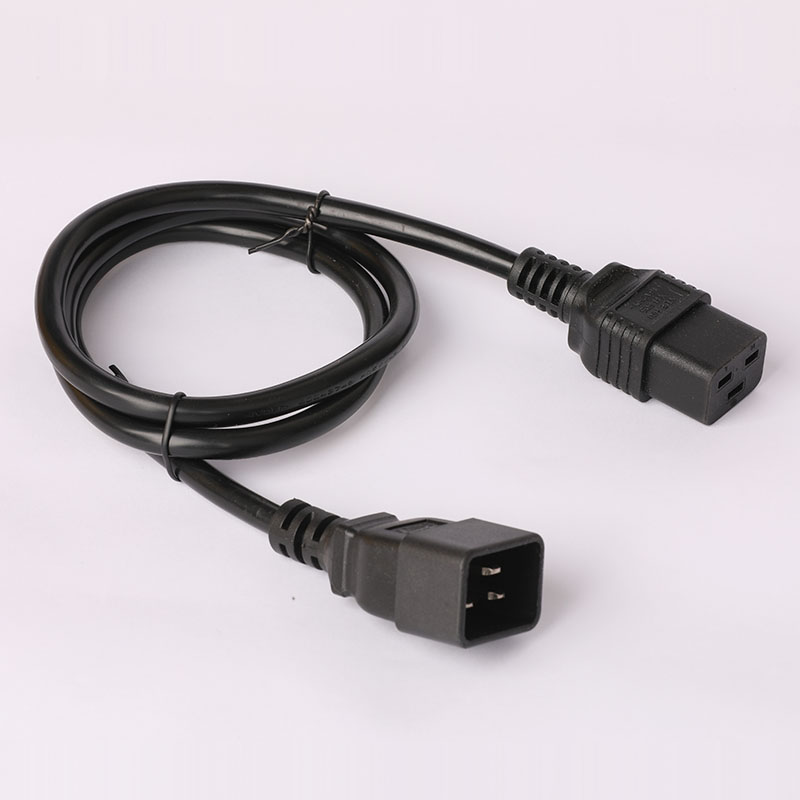
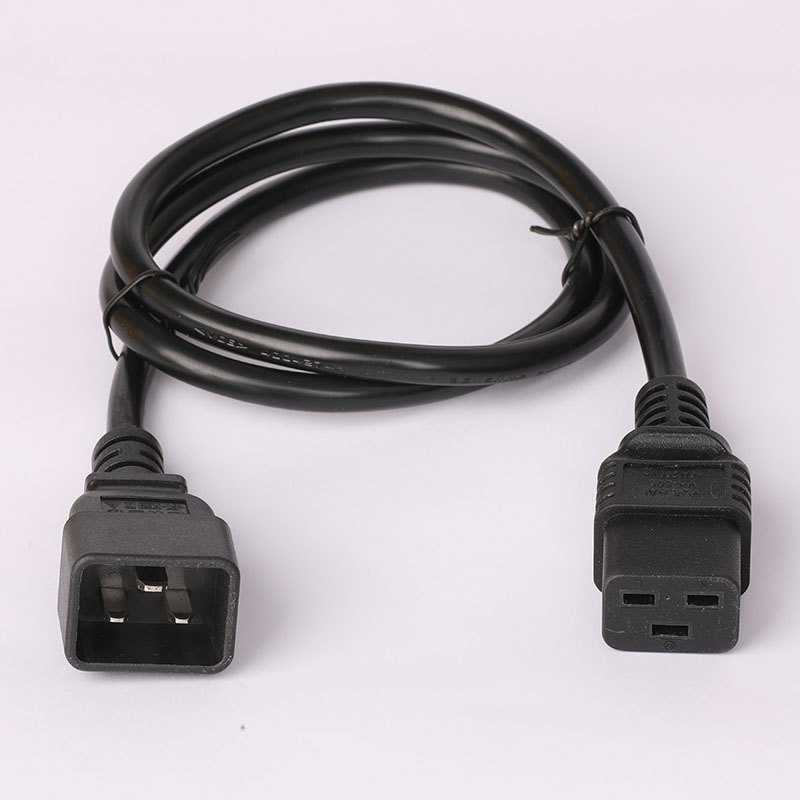
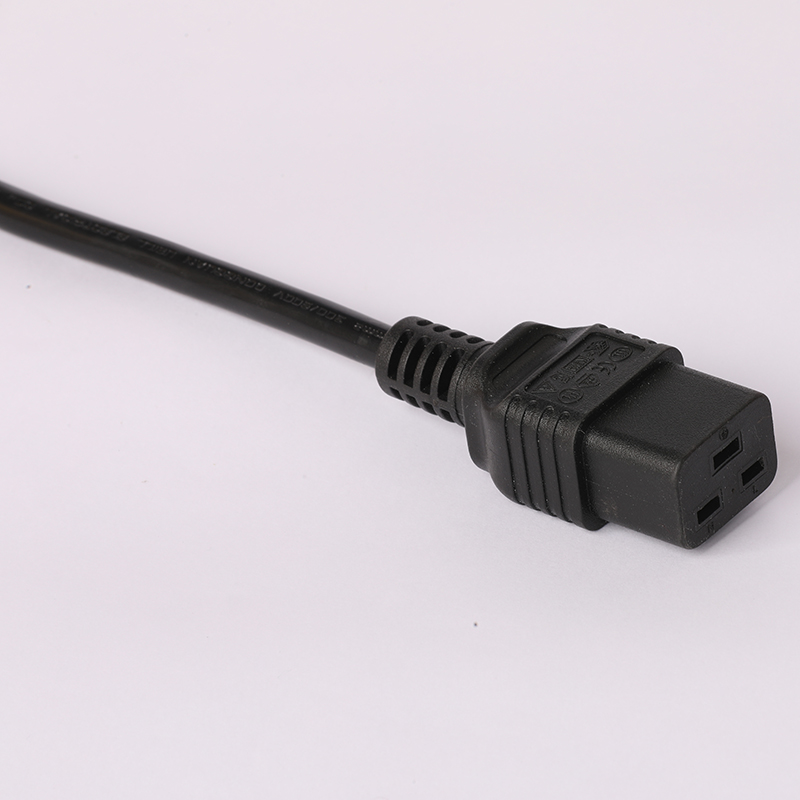
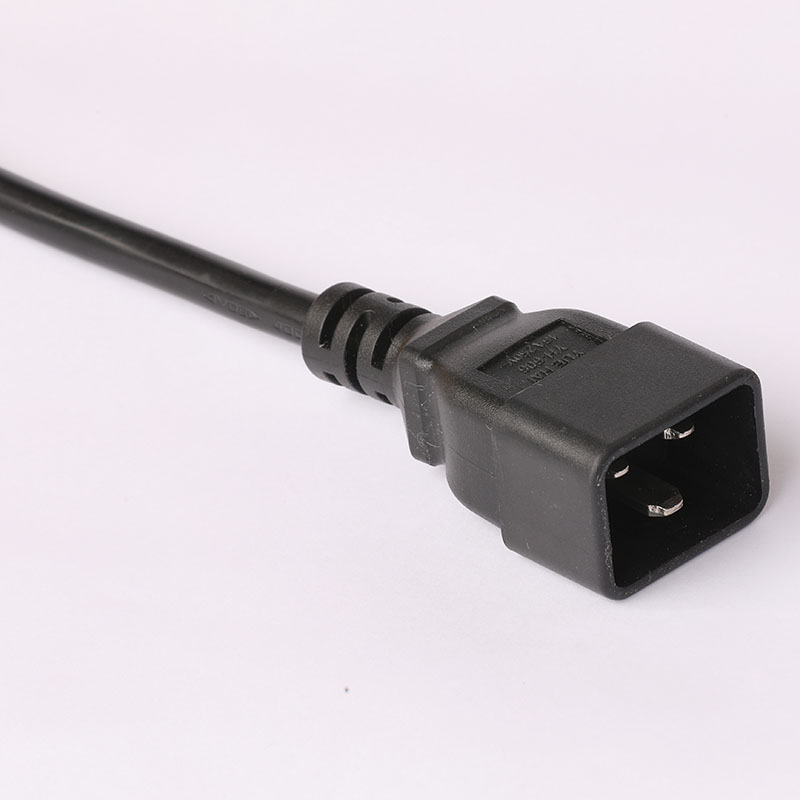
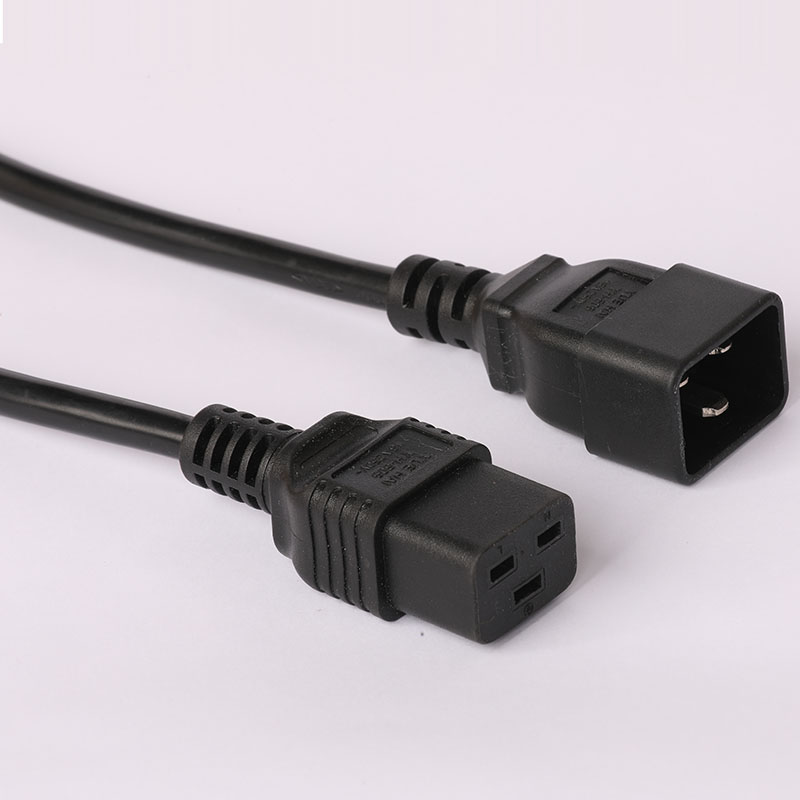
Related Product Guide:
With advanced technologies and facilities, strict good quality manage, reasonable rate, superior assistance and close co-operation with shoppers, we have been devoted to supplying the very best price for our consumers for Big Discount 100 Ft Power Cord - High quality certificated C19 to C20 power cord manufacturer – Komikaya , The product will supply to all over the world, such as: Suriname, Mecca, Rwanda, We pay high attention to customer service, and cherish every customer. We've maintained a strong reputation in the industry for many years. We are honest and work on building a long-term relationship with our customers.
We are old friends, the company's product quality has been always very good and this time the price is also very cheap.

